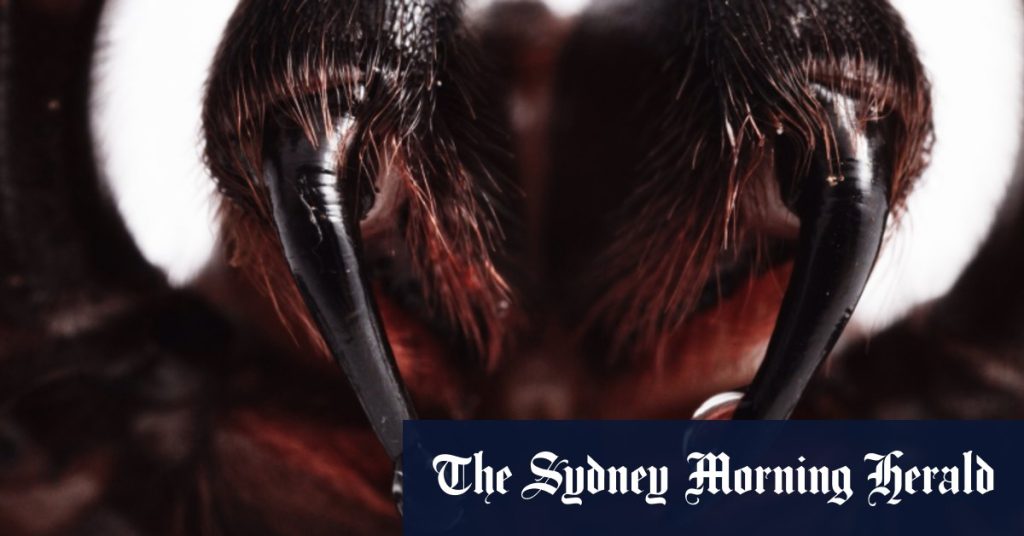The iconic Sydney funnel-web spider, long feared as the world’s most venomous, has been revealed to be not one, but three distinct species. Scientists, after meticulous research, have confirmed the existence of two previously unrecognized species alongside the original Atrax robustus, the "true" Sydney funnel-web. This discovery has significant implications for antivenom development and conservation efforts, and shines a light on the remarkable biodiversity hidden within even well-studied regions. One of these new species, nicknamed "the big boy" and scientifically named Atrax christenseni after the individual who spearheaded its discovery, is particularly noteworthy due to its imposing size.
Kane Christensen, a venom collector for the Australian Reptile Park, initially noticed the unusually large funnel-webs being brought in by the public. Significantly larger than the typical 2.5-centimeter male Sydney funnel-web, some specimens reached sizes comparable to a human palm, raising concerns about their potential danger. Over several years, the park publicized the capture of increasingly larger specimens, culminating in the discovery of "Hemsworth," the largest funnel-web ever recorded. These outsized spiders prompted a scientific investigation into whether they constituted a distinct species. Christensen’s observations, coupled with the long-held suspicions of the late Dr. Michael Gray at the Australian Museum, spurred a collaborative research effort.
The team employed advanced taxonomic techniques, including microscopic examination of reproductive organs and DNA analysis, to confirm the existence of not one, but two new species. The first, Atrax montanus, the southern Sydney funnel-web, had been classified previously but was rediscovered and confirmed as a distinct species with a broader distribution than initially thought. The second, the "big boy" Atrax christenseni, or Newcastle funnel-web, was entirely new to science. This species is restricted to a relatively small area around Newcastle, making its discovery even more significant. This unveiling of new species underscores the rich biodiversity yet to be discovered, even in seemingly familiar environments.
The classification of Atrax christenseni as a separate species raises concerns about its potential venom toxicity. While existing antivenom is effective against all known funnel-web spider bites, the larger size of the Newcastle funnel-web suggests a greater venom capacity and a higher risk of serious envenomation. Although no fatalities from funnel-web spider bites have been recorded since the development of antivenom in 1981, the increased venom load of Atrax christenseni warrants further investigation. The possibility of a more species-specific antivenom is being considered, requiring further research into the venom composition and toxicity of this newly described species. Professor Geoff Isbister, a clinical toxicologist, points out that larger spiders are more likely to inject sufficient venom to cause significant effects, emphasizing the potential increased danger posed by this larger species.
Beyond the immediate medical implications, the discovery of the Newcastle funnel-web also highlights the importance of conservation. The precise locations of these spiders are being kept confidential to protect them from illegal collection and potential population decline. The restricted distribution of Atrax christenseni makes it particularly vulnerable to such threats. This secretive approach mirrors the strategy used to protect the Wollemi pine after its discovery, demonstrating the importance of preserving unique and potentially endangered species. The scientific community is committed to protecting these newly discovered species and ensuring their long-term survival.
The discovery of these new funnel-web species is not only a significant scientific achievement but also a testament to the dedication and curiosity of individuals like Kane Christensen. His keen observation and passion for these often-feared creatures led to a major breakthrough in our understanding of funnel-web spider diversity. The naming of Atrax christenseni in his honor recognizes his crucial role in uncovering this hidden biodiversity, showcasing the impact individuals can have on scientific discovery. The discovery also emphasizes the importance of continuous research and exploration, even in seemingly well-studied areas, as there are undoubtedly more secrets of the natural world waiting to be uncovered.

